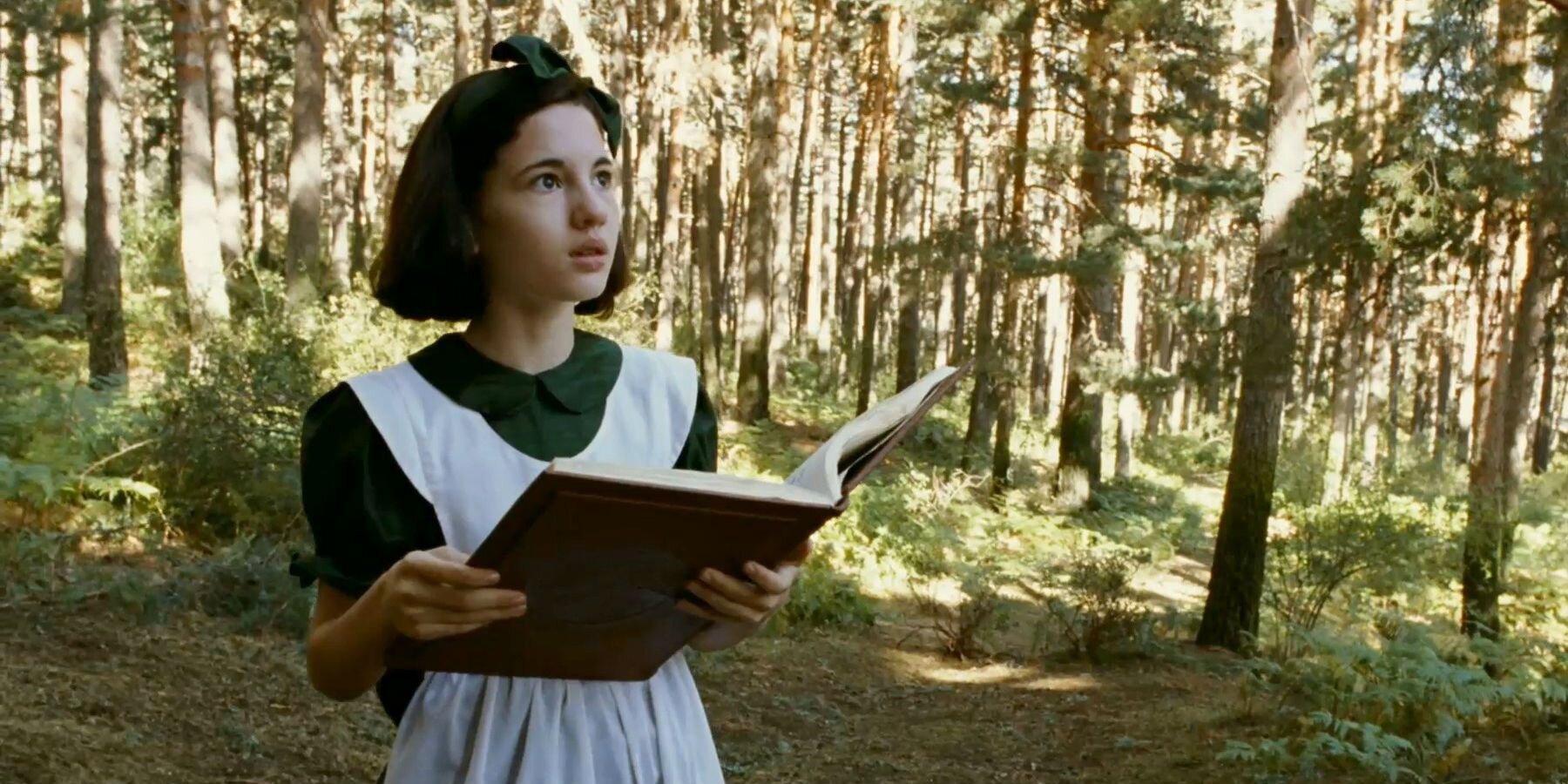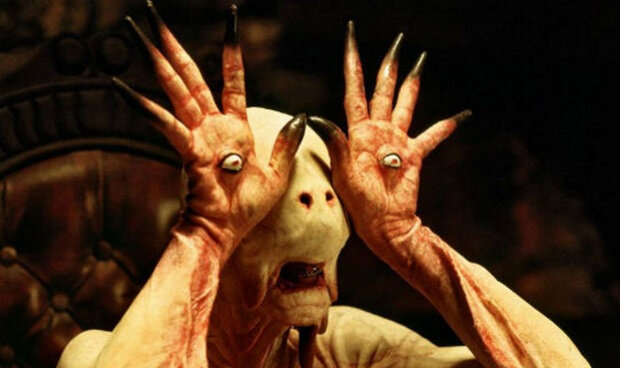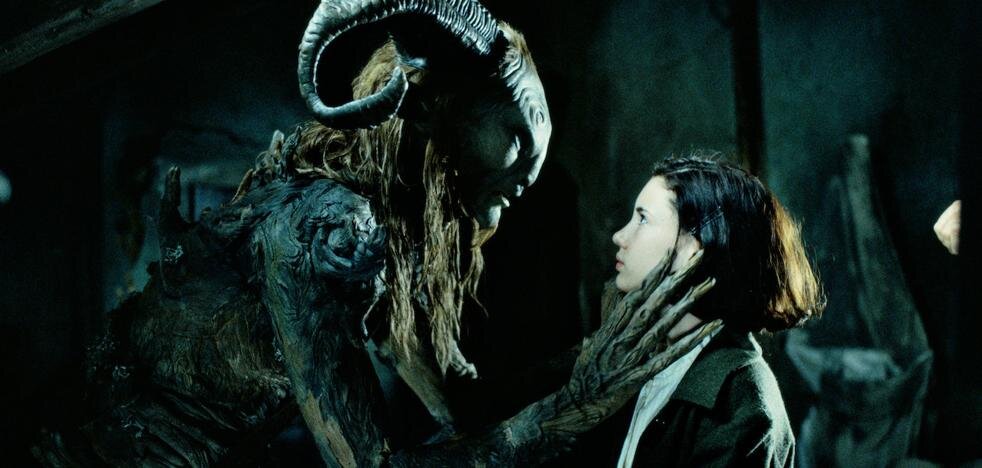A Lesson in Disobedience: Guillermo del Toro’s ‘El laberinto del fauno’ (Pan’s Labyrinth)
Katie Windrum, Spanish Editor
Unfortunately, I first came into contact with Pan’s Labyrinth when I was only around 8 or 9. Despite its fairy-tale themes and child protagonist, this film is *definitely* not for children; I found out the hard way. My close friend and I were staying at her house for the weekend, and noticed her dad watching a ‘scary movie’ while we were supposed to have been in bed. We sneakily peered through the living-room door’s transparent glass, only to witness Captain Vidal brutally beating a man with a wine bottle. We screamed and ran back to bed as fast as our legs would carry us. And despite my best efforts to forget them, I will always remember that horrible adrenaline and gruesome image.
14 years later, my YouTube recommendations promote a CrashCourse video on this Spanish filmic giant. Noting its inter-textual references, I head straight to Prime Video to give it another chance.
Set in 1944 (just 5 years after the Spanish Civil War), Pan’s Labyrinth follows Ofelia, whose mother has married a cruel, fascist soldier: the same Captain Vidal that scarred me for life as an 8-year-old. Whisked away from the city and into his oppressive army base, Ofelia must confront the horrors of Vidal’s physical abuse from a tragically young age. Yet as an avid reader of fairy-tales, she manages to immerse herself in a fantastical yet dangerous world, thereby coping with the traumas of her everyday situation in Vidal’s home.
Princess Ofelia on her first magical quest: https://screenrant.com/pans-labyrinth-movie-what-happened-ofelia/
In the wondrous realm that Ofelia discovers, she is hailed as the long-lost ‘Princess Moana’; no longer associated with her disgusting stepfather. To prove her position above mere mortals, she must undertake three perilous tasks, guided by a creepy faun from the depths of a stone maze. Of course, these tasks are rarely performed smoothly, as the young princess frequently disobeys either her mother and Vidal in the real world, or indeed the faun in the fantastic world. Crawling into the beetle-infested lair of a giant toad, for instance, Ofelia soils her dress right before Vidal’s dinner party. Ordered by her mother to take a bath at once, she smiles mischievously at the thought of angering Vidal, pressing further and further into the fairy-tale world that he deems to be a load of ‘mierda’ (sh*t).
During her second quest, Ofelia then ignores the faun’s advice not to eat from the banquet she will encounter, lest she be devoured by the child-eating monster guarding it. Guillermo del Toro seamlessly connects this monster - commonly known as ‘The Pale Man’ - to the figure of Vidal through parallel shots dispersed throughout the film. Vidal sits at the head of the table during his dinner party, just as The Pale Man ominously looms over his banquet from a strikingly similar position. Piles of infant shoes in the corner of the monster’s lair also recall harrowing footage from World War II, subtly linking Vidal’s fascist ideologies to The Pale Man. By eating the forbidden fruit from his table, Ofelia awakens the dormant monster. She must learn to escape using her own wit in an intensely stressful circumstance, without the aid of the faun or the adults who fail to protect her.
The Pale Man with his all-seeing eyes: https://www.denofgeek.com/movies/20-great-movie-monsters-who-only-appear-in-one-scene/
Unlike my rebellious self who could run from the Vidal I had seen on screen, Ofelia has no choice but to keep rebelling - to traumatise herself in the fantastical world in order to equip herself for the equally traumatising real one. Disobedience to authority in the labyrinth becomes a form of escape for Ofelia, whilst also helping her to face a sinister reality, in which the noblest act against fascism is precisely that of disobedience.
And in some ways, Guillermo del Toro himself can be viewed as a disobedient creator. He wonderfully draws upon images from popular children’s tales, having Ofelia’s costume remind us of Alice in Wonderland, for example. At the same time, however, del Toro twists the fairy-tale genre into a more blatant, bloodier exposé of the war-torn, adult world. He refuses to make clear-cut distinctions between Ophelia’s fantasy and reality, making items like chalk and a mandrake root from the labyrinth clearly visible to adult characters at the army base. Blurring the boundaries between the real and surreal, del Toro thus inscribes himself in the tradition of Miguel de Cervantes - the famously subversive author of Don Quijote de la Mancha. As an early-modern Spanish student, I recommend this classic text as much as I recommend Pan’s Labyrinth.
The faun tells Ofelia about her third and final quest: https://www.elcorreo.com/butaca/cine/laberinto-fauno-fantastico-20200709205349-ntrc.html
In the wayward world depicted by del Toro, disobedience becomes moral, whilst obedience is immoral. Ultimately, the director’s creative disobedience has engendered an emotive and didactic production, standing as a powerful insight into the Spanish post-war tensions. With the option of English subtitles and its well-renowned status, Pan’s Labyrinth is an excellent film for anyone interested in broadening their knowledge of the Spanish Civil War and its atrocities.
Watch the CrashCourse video here: https://www.youtube.com/watch?v=NqDLB3JWfds&t=504s
And of course, the iconic Pale-Man scene (but please beware its scariness!): https://www.youtube.com/watch?v=ypBj0xDP-io&t=302s


